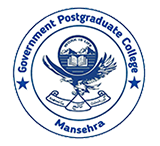There are no hard and fast rules for structuring the research paper but there are certain steps (like Research Methods) which should be included. Additionally, there are certain important guidelines for constructing the important steps in the research paper.
- Title Page and Information of the Authors:
The title page should be academic and concise. It should contain the title of the research paper followed by complete address and affiliations of the authors.
An Abstract, with length not more than 200 words, along with maximum five key words should be sent separately to the editor. It should clearly focus on the ontological, epistemological and methodological dimensions of the study.
Introduction should comprise of the background of the study, highlighting major objectives and the research argument the researchers want to contend. It should also incorporate a concise survey of related literature.
Appropriate research methodology in accordance with the nature of the subject may be constructed under this section.
The conclusion should contain the summary of main arguments, contribution of research, main findings and limitations of the research and exploration of new areas in the same field.
Appendices should be identified as (1.1, 1.2) and there is no need to identify the single appendix. The Tables and Figures should also be identified with numbering like (1.1, 1.2) and there is no need to identity a single figure or table. Appendices, figures and tables should be put on the separate pages.
The footnotes should also be avoided and use them sparingly. Use the consecutive numbering to the footnotes in Arabic numbers. Write the footnotes in short and precise words and don’t make them too big.
American Psychological Association (APA) Manual (7th Edition) is the standard referencing style of the PRH.
The length of the paper should not exceed from 8000 words (Times New Roman, 12 Font). Paper containing more than 8000 words will be returned to the author(s)/corresponding author to curtail. Articles should be typed in double-space. (Including footnotes and references with wide margins) Authors are urged to write as concisely as possible, but not at the expense of clarity.


